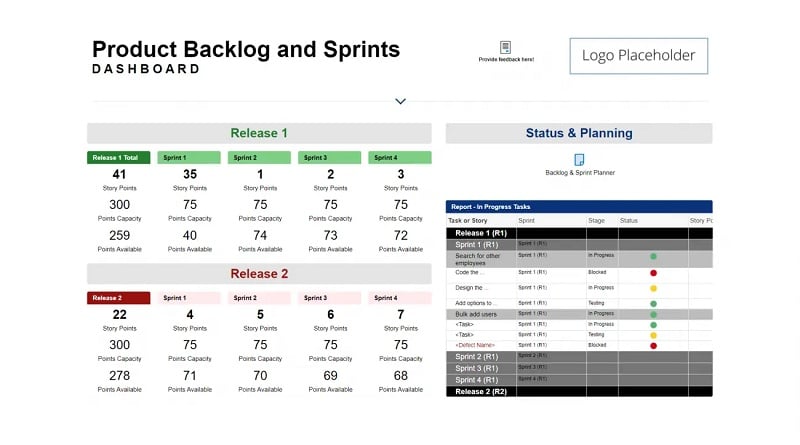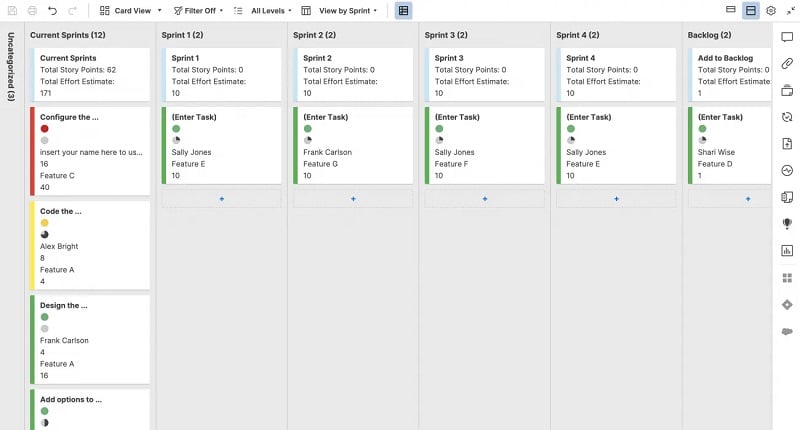Pick the Business Template You Love
Agile Templates
Design Sprint
Plan Your Sprints in One Organized Workspace
Sprint Retrospective
Contextualizing Sprints
Agile Sprint Planning
Agile Backlog and Sprint Planning Template Set
Agile Project with Gantt Template
Sprint Planning Board Template
These Agile Templates Are Perfect For
- Product Backlog Management: Agile templates can be used to maintain a product backlog effectively. A well-organized product backlog includes a prioritized list of features, improvements, and fixes to be implemented in future sprints.
- Sprint Planning: Templates can guide sprint planning sessions, helping teams define the scope of work for the next sprint. They often include sections for objectives, user stories, tasks, and assignments, ensuring nothing is overlooked.
- User Story Mapping: These templates allow teams to visually manage and prioritize user stories, ensuring a customer-centric approach to product development.
- Kanban Boards: Agile templates can be leveraged to create Kanban boards, which provide a visual representation of the workflow. Kanban boards help teams manage and optimize the flow of work and can be digital or physical.
- Burndown Charts: Agile teams often use burndown chart templates to visualize the amount of work remaining in a sprint, allowing for better tracking and progress assessment.
- Retrospective Analysis: Post-sprint retrospective templates help teams reflect on their achievements and areas of improvement, promoting continuous learning and growth.
- Daily Stand-ups: Agile templates are great for organizing daily stand-ups or scrum meetings, facilitating effective communication, and ensuring everyone is on the same page.
- Roadmap Planning: Agile roadmap templates help in visualizing the project's direction and progress, providing a high-level overview of the product's strategic goals and planned iterations.
- Risk Assessment: Templates can be used to conduct agile risk assessments, allowing for proactive risk management and mitigation strategies.
- Story Point Estimation: Templates aid in estimating the difficulty level of user stories in terms of story points. This assists in task prioritization and sprint planning.
- Velocity Chart Creation: Agile templates help in creating velocity charts, which provide a summary of the amount of work a team can handle in a single sprint.








